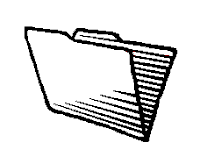
|
Explanation of Water Quality Standards applicable to the Boulder Creek Watershed
| |

|
Explanation of Water Quality Standards applicable to the Boulder Creek Watershed
| |
This page outlines many of the water quality standards federal, state and local agencies apply to public waterways such as St. Vrain and Boulder Creek. This information was developed in the year 2000 and may not reflect subsequent changes in applicable federal and state laws and regulations.
What are Water Quality Standards?

U.S. Environmental Protection Agency Drinking Water Standards

Drinking water standards are set by the U.S. Environmental Protection Agency (EPA) to control the level of contaminants in the nation's drinking water. The Safe Drinking Water Act (SDWA) gives the EPA the authority to set drinking water standards. Drinking water standards apply to public water systems. Public water systems include municipal water companies, homeowner associations, schools, businesses, campgrounds and shopping malls (U.S. EPA Office of Ground Water and Drinking Water, 1999).
There are two categories of drinking water standards:
After reviewing health effects studies, EPA sets a Maximum Contaminant Level Goal (MCLG), the maximum level of a contaminant in drinking water at which no known or anticipated adverse effect on the health of persons would occur, and which allows an adequate margin of safety. MCLGs are non-enforceable public health goals. Since MCLGs consider only public health and not the limits of detection and treatment technology, sometimes they are set at a level which water systems cannot meet. When determining an MCLG, EPA considers the risk to sensitive subpopulations (infants, children, the elderly, and those with compromised immune systems) of experiencing a variety of adverse health effects.
Once the MCLG is determined, EPA sets an enforceable standard. In most cases, the standard is a Maximum Contaminant Level (MCL), the maximum permissible level of a contaminant in water which is delivered to any user of a public water system. The MCL is the level that may be achieved with the use of the best available technology, treatment techniques, and other means which EPA finds are available, taking cost into consideration. The MCL is set as close to the MCLG as feasible.
When there is no reliable method that is economically and technically feasible to measure a contaminant at particularly low concentrations, a Treatment Technique (TT) is set rather than an MCL. A treatment technique (TT) is an enforceable procedure or level of technological performance which public water systems must follow to ensure control of a contaminant. An example of Treatment Technique rules is the Lead and Copper Rule (optimized corrosion control) (U.S. EPA Office of Ground Water and Drinking Water, 1999).
Colorado Department of Public Health and Environment- Water Quality Control Division (CDPHE-WQCD)
The Colorado Department of Public Health and Environment-Water Quality Control Division (WQCD) provides a classification system for surface waters, which establishes beneficial use categories. Waters are classified according to the uses for which they are presently suitable or intended to become suitable. Classifications may be established for any state surface waters, except that water in ditches and other manmade conveyance structures shall not be classified. The beneficial use categories are:

These surface waters are suitable or intended to become suitable for potable water supplies. After receiving standard treatment (defined as coagulation, flocculation, sedimentation, filtration, and disinfection with chlorine or its equivalent) these waters will meet Colorado drinking water regulations and any revisions, amendments, or supplements thereto.
Class l - Cold Water Aquatic Life
These are waters that (1) currently are capable of sustaining a wide variety of cold water biota, including sensitive species, or (2) could sustain such biota but for correctable water quality conditions. Waters shall be considered capable of sustaining such biota where physical habitat, water flows or levels, and water quality conditions result in no substantial impairment of the abundance and diversity of species.
Class 1 - Warm Water Aquatic Life
These are waters that (1) currently are capable of sustaining a wide variety of warm water biota, including sensitive species, or (2) could sustain such biota but for correctable water quality conditions. Waters shall be considered capable of sustaining such biota where physical habitat, water flows or levels, and water quality conditions result in no substantial impairment of the abundance and diversity of specifies.
Class 2- Cold and Warm Water Aquatic Life
These are waters that are not capable of sustaining a wide variety of cold or warm water biota, including sensitive species, due to physical habitat, water flows or levels, or uncorrectable water quality conditions that result in substantial impairment of the abundance and diversity of species.

Class 1 - Primary Contact
These surface waters are suitable or intended to become suitable for recreational activities in or on the water when the ingestion of small quantities of water is likely to occur. Such waters include but are not limited to those used for swimming, rafting, kayaking and water-skiing.
Class 2 - Secondary Contact
These surface waters are suitable or intended to become suitable for recreational uses on or about the water which are not included in the primary contact subcategory, including but not limited to fishing and other streamside or lakeside recreation.
These surface waters are suitable or intended to become suitable for irrigation of crops usually grown in Colorado and which are not hazardous as drinking water for livestock.
Water Quality Control Commission classifications for all the major streams in Colorado are available in PDF format from the CDPHE www site. BASIN has assembled a table of all the classifications and Water Quality Standards for all the Boulder Creek watershed streams.
To define the conditions generally necessary to maintain and attain such beneficial uses, the WQCD provides water quality standards. BASIN has assembled a table of the water quality standards applicable to surface and domestic water resources in the Boulder area. For the complete regulations, visit the CDPHE regulations web site and see Regulation 31 - Basic Standards and Methodologies for Surface Water.